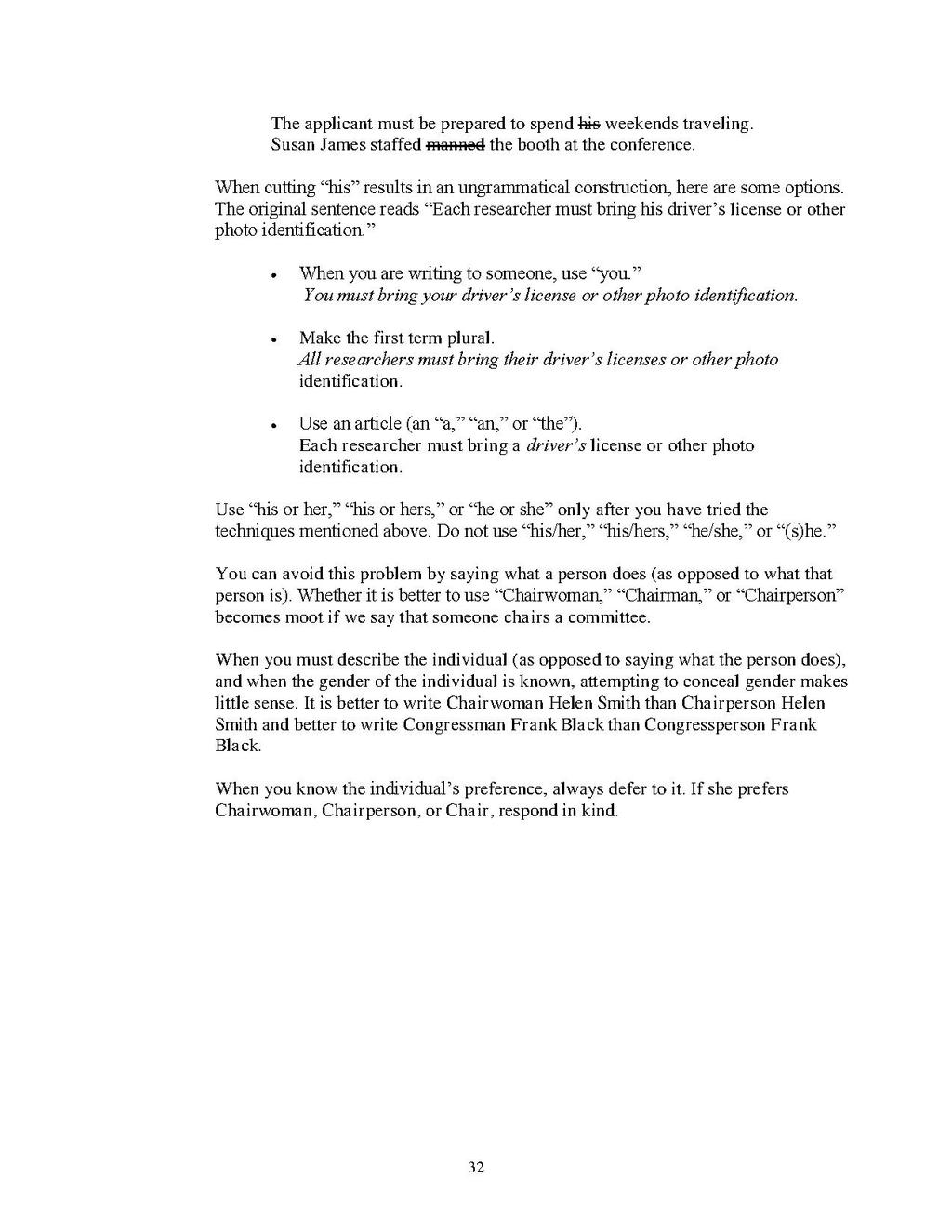- The applicant must be prepared to spend
hisweekends traveling. Susan James staffedmannedthe booth at the conference.
When cutting "his" results in an ungrammatical construction, here are some options. The original sentence reads "Each researcher must bring his driver's license or other photo identification."
- When you are writing to someone, use "you." You must bring your driver's license or other photo identification.
- Make the first term plural. All researchers must bring their driver's licenses or other photo identification.
- Use an article (an "a," "an," or "the"). Each researcher must bring a driver's license or other photo identification.
Use "his or her," "his or hers," or "he or she" only after you have tried the techniques mentioned above. Do not use "his/her," "his/hers," "he/she," or "(s)he."
You can avoid this problem by saying what a person does (as opposed to what that person is). Whether it is better to use "Chairwoman," "Chairman," or "Chairperson" becomes moot if we say that someone chairs a committee.
When you must describe the individual (as opposed to saying what the person does), and when the gender of the individual is known, attempting to conceal gender makes little sense. It is better to write Chairwoman Helen Smith than Chairperson Helen Smith and better to write Congressman Frank Black than Congressperson Frank Black.
When you know the individual's preference, always defer to it. If she prefers Chairwoman, Chairperson, or Chair, respond in kind.
